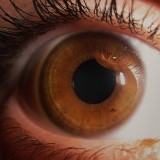Optical Illusions: Is Your Brain Being Fooled By Your Eyes?
A few weeks ago I started researching the phenomena that happens when we look at optical illusions. (You can read more about that here.) Today, I want to show you two more optical illusions and explain how our brains and our eyes can work together to give us a false view of reality. Do you notice your brain being fooled by your eyes?
Remember, an optical illusion can use light, color, or interesting patterns to deceive our brains into thinking we see something we don’t. Sometimes, illusions give us the feeling of movement, or that we are watching a still image move. Other times, our brains fill in the blanks—inserting information that our brains believe we “should” see in an image, when it’s not actually there to be observed.
Check out these two interesting optical illusions:
Basketball Shadow Illusion
Watch the basketball in this video. It actually keeps the same course from the bottom left side of the screen to the top right side. Now watch what happens when the shadow is added to the basketball. Does your brain get fooled into thinking that the ball has moved? Is the ball higher? Does it have the appearance of flying through the air, once the shadow is separated from the object? What about when the shadow bounces? Does your brain think the basketball bounces too?
This illusion evidences how we rely on shadows to give us information about what we see. Our eyes view an object and send information through the optic nerve to the brain for identification. Then we are forced to not just identify the object itself, but to also decide where that object is in time and space. In this illusion, we find out how much we rely on other information, like shadows, to accomplish this. Most of the time, shadows are reliable, but in the world of optical illusions they aren’t!
Shades of Gray: The Gradient Illusion

This picture obviously shows a graded gray bar on a graded gray background. Or does it? Cover everything but the bar, and you’ll see that instead of moving from a lighter shade of gray to a darker one as you move towards the right. It’s just an illusion. The gray bar is actually one consistent color throughout.
How does it work? Well, it’s called a “simultaneous contrast illusion.” Your brain fills in the information it believes is missing–that is, the lighting. When the left side of the bar is viewed in a dim, or darker, situation (the dark gray background), your brain naturally lightens it up. When your brain assesses the same color against the lighter background on the right, it makes the bar a darker gray. This happens because your brain “assumes” that the light surrounding it is adequate!














